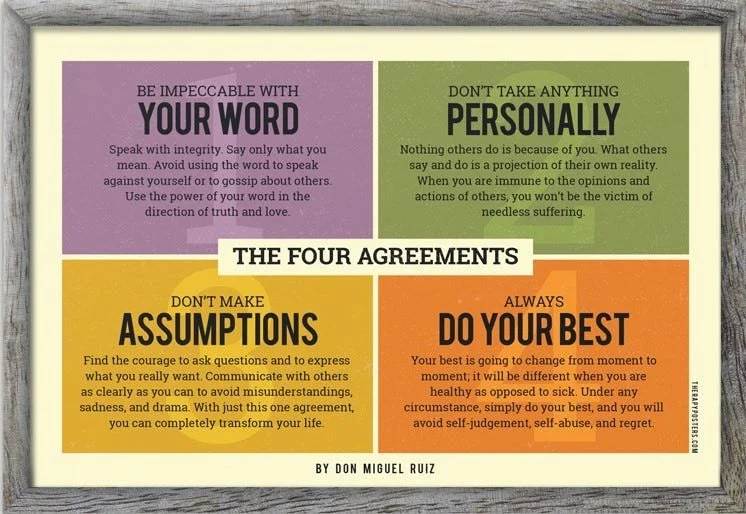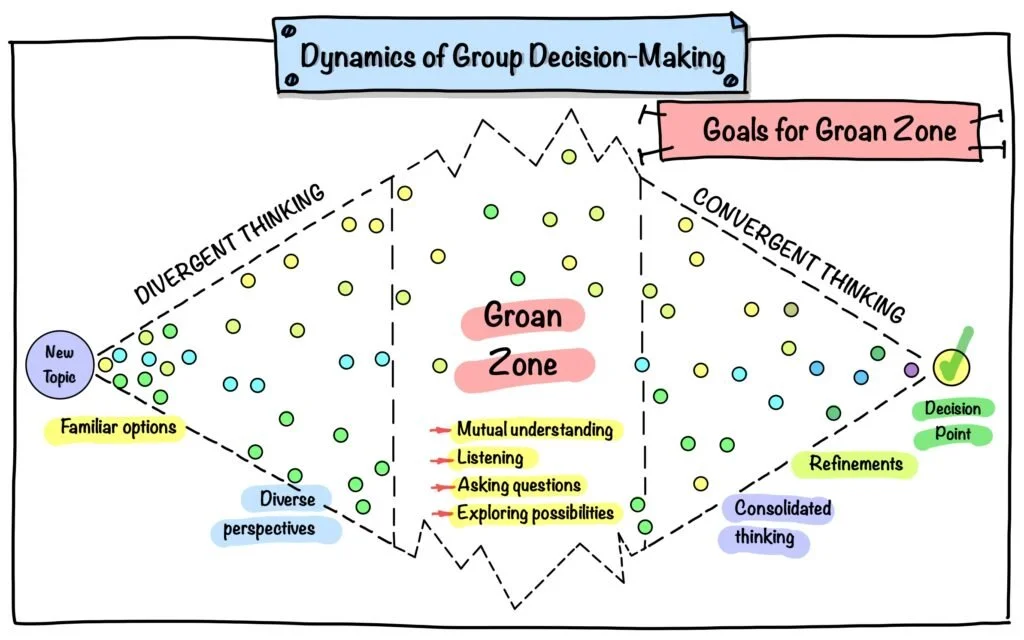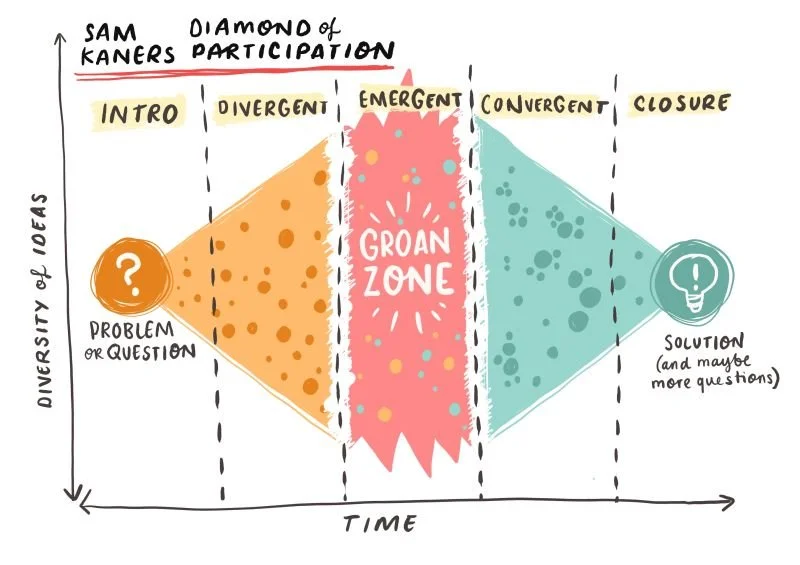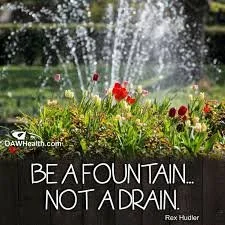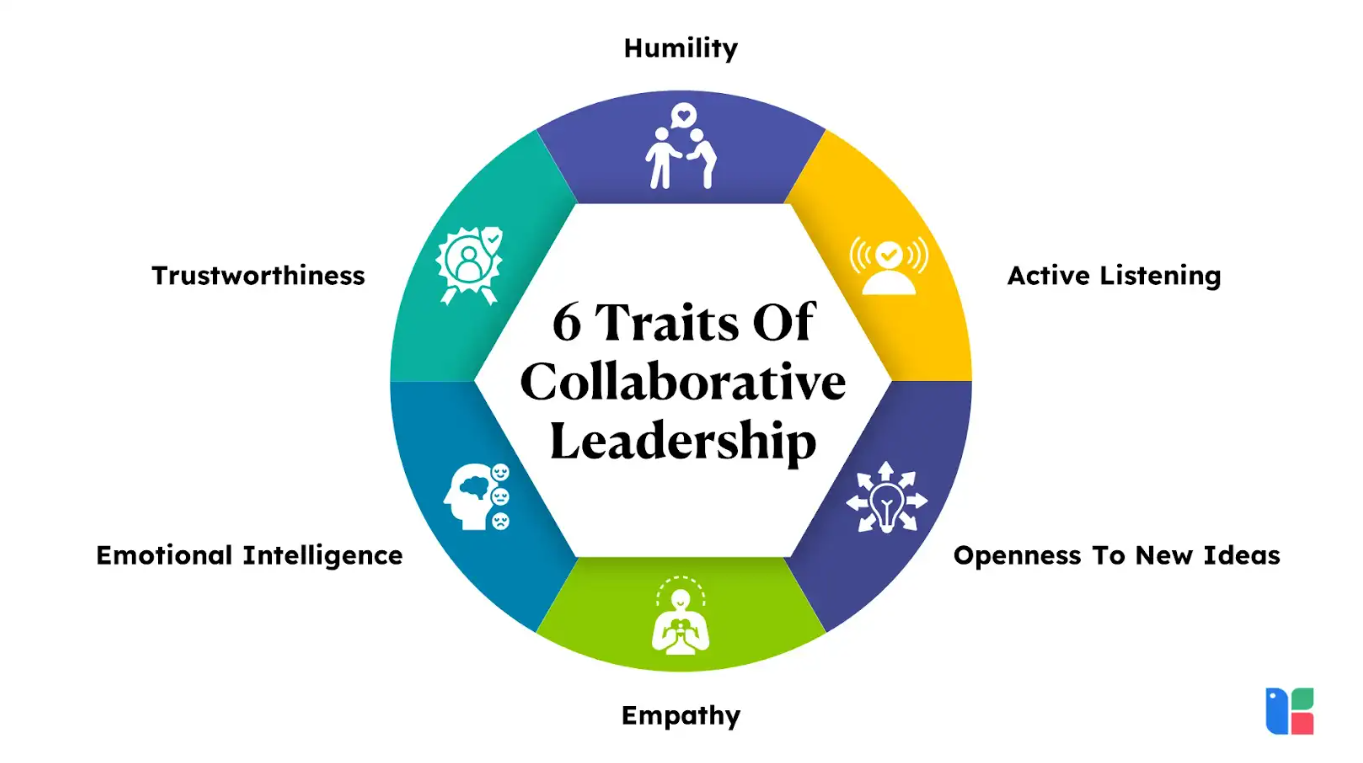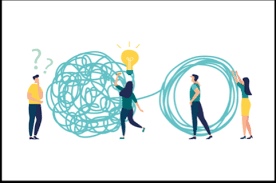Collaboration: Navigating the Journey from Polite to Profound
Real collaboration is rarely a straight line from a problem to a solution. It is a messy, non-linear journey that requires us to move away from "business as usual". As a collaboration guide, understanding the topography of this journey is your most powerful tool. It allows you to normalize the inevitable friction and help your group navigate the turbulence of combining diverse worldviews. Using the Groan Zone is a powerful tool to help both normalize friction and navigate through it.
When you understand the Groan Zone, you stop panicking when things get difficult. Instead, you recognize that the confusion is a necessary step toward a breakthrough. Here is how the journey unfolds and how you can guide your partners through it.
1. The Divergent Zone: Opening Up
The "Honeymoon" Phase: The process begins on the far left of the model with a core "Problem or Question". In this initial stage, the group moves outward, expanding the "Diversity of Ideas".
What is happening: This is the time for information gathering and brainstorming. The goal is to get every perspective on the table. We are demonstrating a commitment to "recognizing and respecting individual difference and to building on divergent values and approaches".
The dynamic: It is usually polite, energetic, and optimistic. Participants are often on their best behaviour, willing to share "knowledge and expertise among the group".
The Collaboration Guide’s Role: Your job here is to ensure true diversity is represented. You are encouraging open "dialogue ('conversations')" rather than debate. You want to ensure that "differences of viewpoint are seen as central to the process and not a diversion".
2. The Groan Zone: The Messy Middle
The "Emergent" Phase: As the diamond widens to its peak, we enter the centre section labelled "Emergent". The diagram depicts this area with rough, jagged edges and the words "Groan Zone" scribbled in the middle.
What is happening: The sheer volume of diverse ideas creates cognitive overload. Participants realize that the old ways won't work and that they must move toward "transformation". They are trying to integrate conflicting worldviews, languages, and constraints.
The dynamic: This feels "jagged" like the drawing. It is characterized by repetition, misunderstanding, and frustration. It can be "uncomfortable," but remember: "if all sessions are ‘safe’ the training [or partnership] is probably having very little impact".
The Collaboration Guide’s Role: This is where you earn your keep.
Hold the space: Create a "safe enough" environment for participants to take the necessary "risk" of stepping out of their comfort zones.
Deep Listening: Shift the group into "active listening" mode, ensuring they hear "both the spoken and the unspoken".
Challenge: Be prepared to "challenge participants’ assumptions and frameworks" to help them look beneath the surface.
3. The Convergent Zone: Narrowing Down
The Solution Phase: Once the group has struggled through the friction of the Groan Zone, the diamond begins to narrow on the right side. This is the "Convergent" phase.
What is happening: The group begins to filter, sort, and synthesize the ideas. Because they have done the hard work of wrestling with their differences in the middle, they are now "creating new knowledge" rather than just accepting a top-down directive.
The dynamic: The energy shifts from frustration to momentum. Clarity emerges. The group moves toward a shared "Solution (and maybe more questions)".
The Collaboration Guide’s Role: Facilitate the decision-making. Help the group crystallize their "transformation" into actionable plans. Use "reflective practice" to look back at the process and ensure the solution is robust and truly shared.
Why This Matters
The "Groan Zone" isn't a bug in the system; it's a feature. It is the crucible where polite agreement is burned away to reveal deep, resilient trust.
If we try to avoid this zone, or if every session feels perfectly safe and comfortable, the collaboration is likely having very little actual impact. As a collaboration guide, your willingness to hold the space during this "uncomfortable" phase is what allows the group to move from superficial politeness to genuine transformation. The mess isn't the enemy; it is the only way through.




